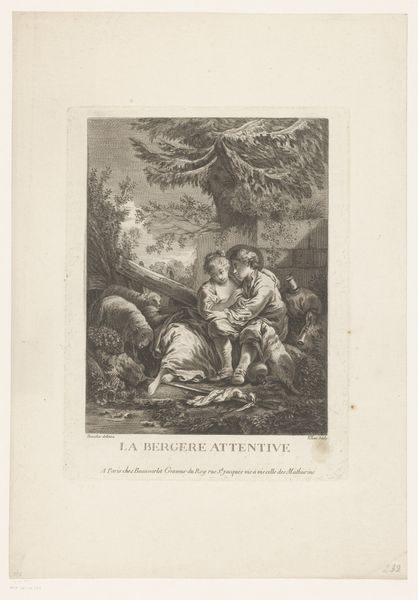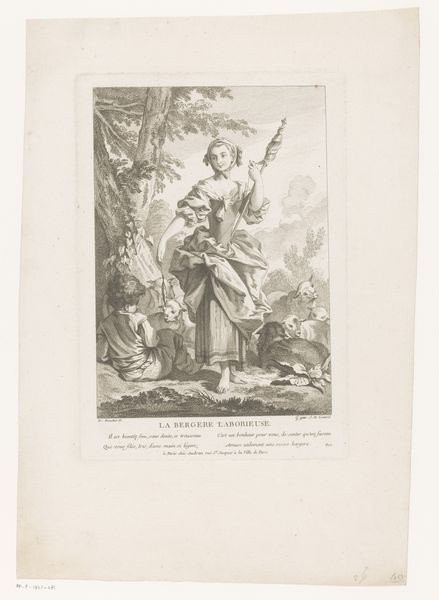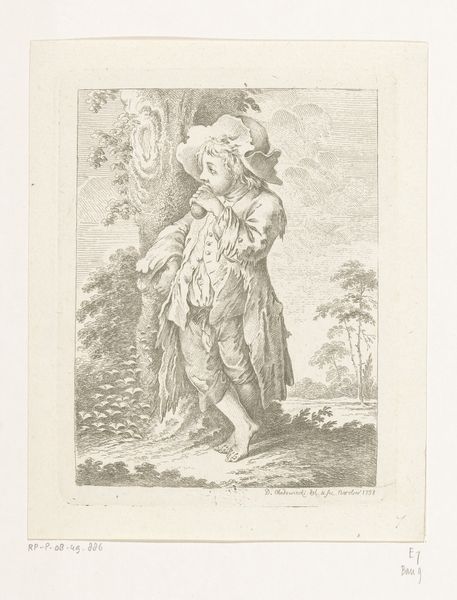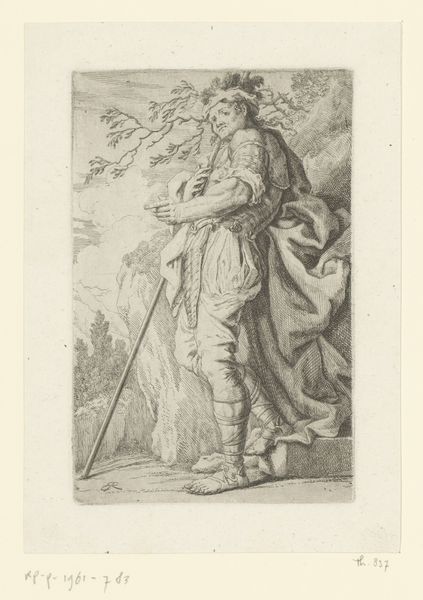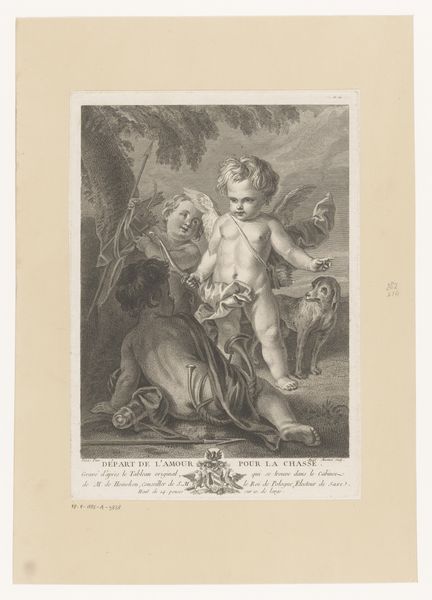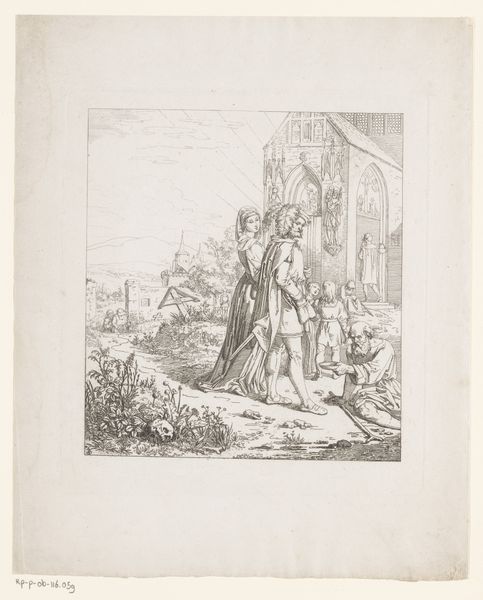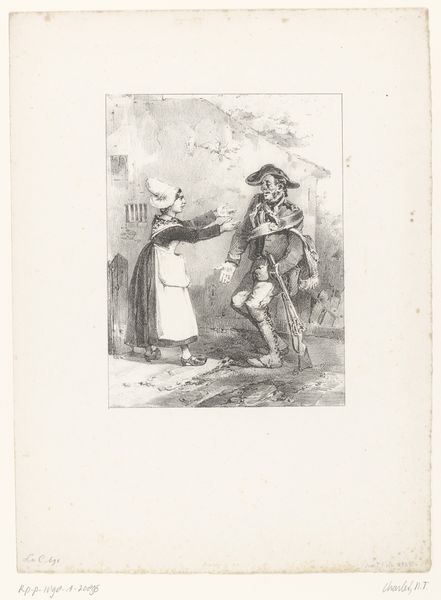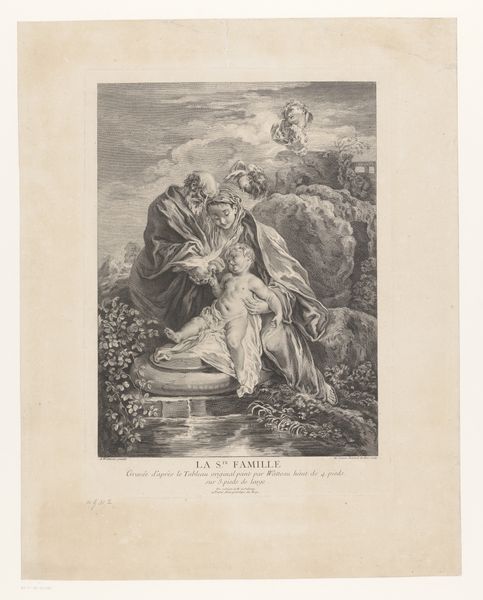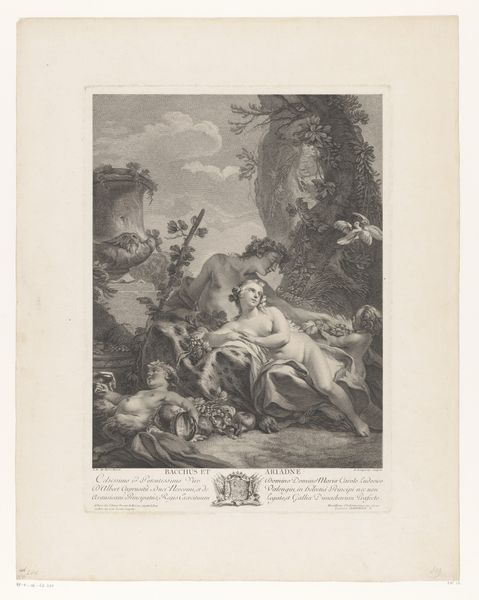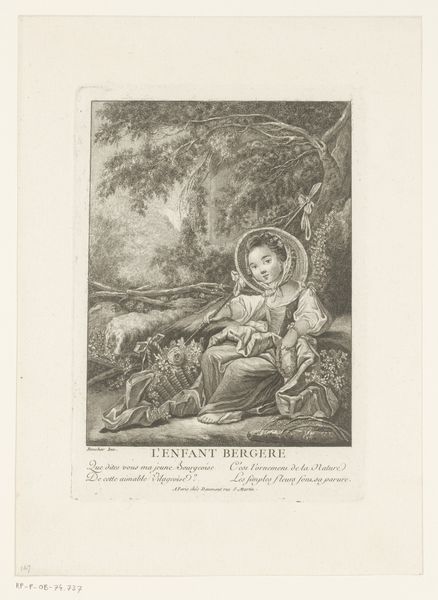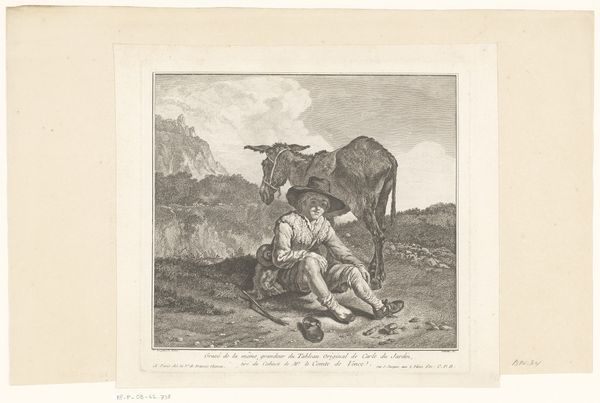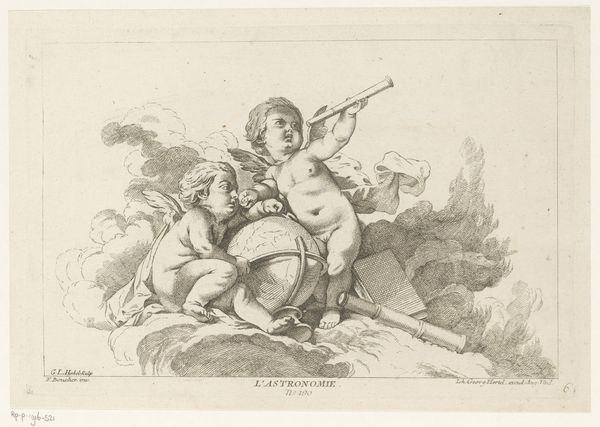
print, engraving
#
portrait
#
narrative-art
#
baroque
# print
#
old engraving style
#
figuration
#
engraving
Dimensions: height 277 mm, width 200 mm
Copyright: Rijks Museum: Open Domain
Curator: Oh, my, look at this print! It has this dreamlike quality, like a hazy memory trying to take shape. A young man with a cape billowing around him stands holding what looks like... bagpipes? It’s called Daphnis. Editor: Indeed! We're looking at an engraving titled "Daphnis," created somewhere between 1691 and 1767. Louis Surugue made it. The piece is housed here at the Rijksmuseum. Its style connects with Baroque traditions of grand portrayal. But what captures my attention most are the political associations linked to pastoral themes during that period. Curator: Pastoral themes, yes! I sense that here. What you said gives a lens through which the scene suddenly makes so much sense. You’ve mentioned Daphnis: to me, the name has the ring of Arcadian legends—something bittersweet, about love, loss, nature's wild spirit all mixed in a swirl… But you're bringing in political dimensions that I hadn’t immediately registered. Can you elaborate? Editor: Certainly. Representations of shepherds and idyllic landscapes were often used as allegories for rulers and political systems. It was a means to discuss social concerns through this idealized and palatable lens. In this case, the image takes on a symbolic heft. Here, the figure of Daphnis is not merely a shepherd but maybe an allegorical personification. Perhaps his instrument carries political messaging regarding power and populism, wouldn’t you say? Curator: Definitely intriguing... almost subversive when viewed in that way! To think this dreamy bagpiper is also a subtle vehicle for communicating political messages… What might have appeared naive has a bit of stealth, even a revolutionary vibe to it. Editor: Exactly. Remember, the image existed within specific social structures that affected production and public views of the arts. Curator: A quiet rebellion through art. Wonderful! This encounter has completely changed my vision, so, in short, it is worth considering those dynamics because the past keeps shaping how we see even now, right here and now? Editor: Undeniably so. And hopefully we have provided tools for greater appreciation.
Comments
No comments
Be the first to comment and join the conversation on the ultimate creative platform.
